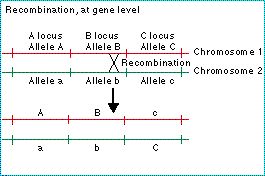Natural selection and variation - What is the source of new variation?

Where does variation come from?
The extent of variation in natural populations is such that every individual must be genetically unique. Evolution from the origin, to the modern diversity, of life must have required more variation than existed in the original population. Where did the extra variation come from?
Several processes can generate new variation in a population.
• Recombination between chromosomes produces new chromosomes with their own unique sequences and many new genetic variants of a character like body size were probably generated by recombination.
• Migration is another important source of new genetic variation: when individuals arrive from distant parts they will often have different genotypes from the local population; they thus provide new genetic variation.
Both recombination and migration work with existing allelic variation; they put existing variation into new genetic, or geographic, combinations. Important though this is, if there were no pre-existing allelic variation, recombination and migration would not generate new genetic variants. Recombination between identical chromosones produces the same identical chromosomes over again.
• Mutation is the original source of genetic variation. Even in a population in which all copies of a chromosome were identical, new genetic variants would arise by mutation.
Figure: recombination at the gene level: the gene sequence in chromosome 1 changes from ABC to ABc: a new variant has been produced.
| Next |



